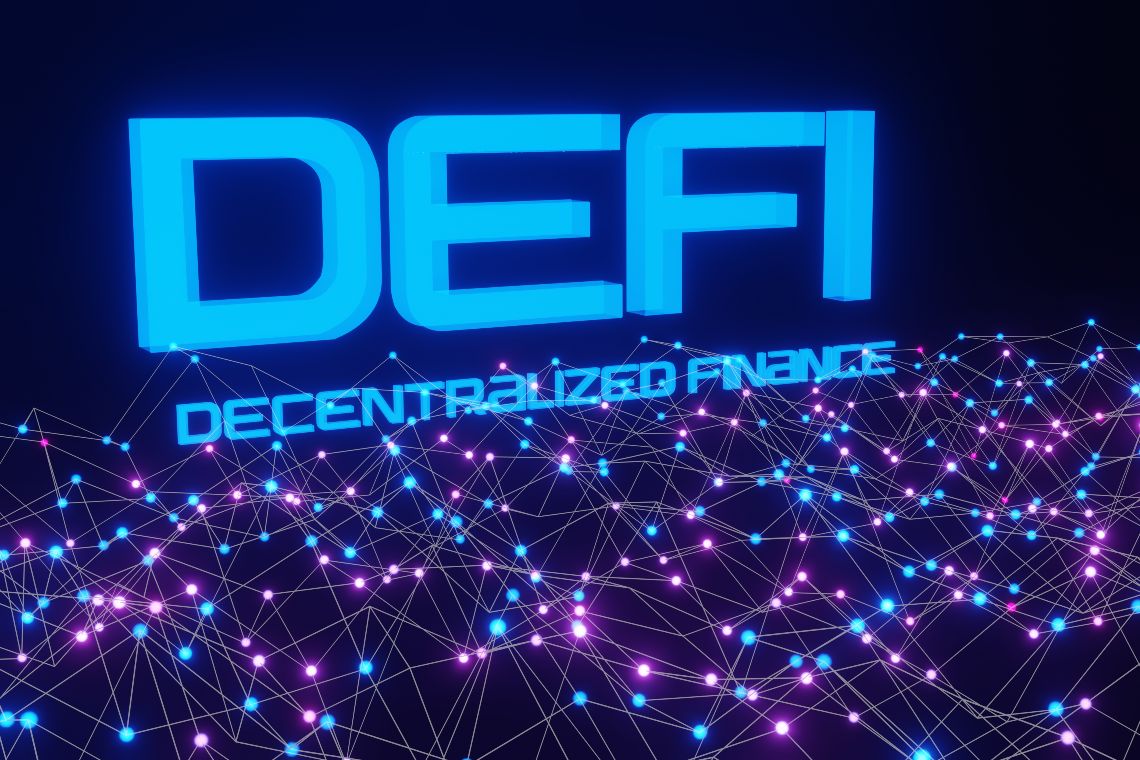The volumes on decentralized finance (DeFi) platforms continues to rise, according to September data released by Dune Analytics.
Volumes on DeFi platform
According to the report, around $15bn was traded on the 14 major decentralized finance platforms. Of these, about 62% were traded on Uniswap, the world’s largest decentralized finance exchange, for about $9.2bn in value.
According to data from Defillama.com, the second-largest exchanges in terms of total locked volumes are PancakeSwap with $5.5 billion and SushiSwap with $5.4 billion.

DeFi and the dominant role of Ethereum
As far as the blockchain is concerned, the scene is still dominated by Ethereum as shown by Coin98 analytics data, but other blockchains such as Polygon Optimism and Arbitrum are showing high growth rates.
Polygon in particular is reported to have surpassed 68 million wallets, with growth in the last week of 16.9%. While the growth of wallets on Ethereum and Binance Smart Chain is stable.
Coin98 data says that daily wallets created on Eth do not exceed 110,000, while on BSC they reach 182,000. Polygon, on the other hand, records a daily increase in the number of wallets in the approximate range of 500,000 to 1.4 million.
As for new addresses, Optimism and Arbitrum show growth rates of 2 and 6 times respectively, bringing the number of addresses on Arbitrum to 121,000 and those on Optimism to 103,000.
What is DeFi and why it frightens traditional finance
These exponential growth numbers on decentralized finance show how this sector is increasingly attracting the interest of investors worldwide.
In its latest issue, the authoritative British business publication The Economist dedicated a long article to DeFi and its incredible rise.
Decentralized finance is a financial system that seeks to replicate the services offered by banks and exchanges, but without the presence of any intermediary exercising control over the system itself. For this reason, it is considered by some to represent a high risk for investors because it would give ample room for financial speculation.
Kimberly Grauer, the director of research at Chainalysis said:
“DeFi is still kind of an insiders’ club. It’s not quite reaching the everyday user yet.”
Also according to Chainalysis, Latin American countries are experiencing the highest growth rates in volumes on DeFi, led by Brazil and Argentina. But interest in this new form of investment is also growing strongly in African countries.
However, the risks of speculation in countries that are not very mature from a financial point of view are very high in a system that is essentially uncontrolled. And it is precisely this lack of controls and rules that has attracted the attention of many regulatory bodies, most notably the SEC, to try to regulate the sector.
SEC versus DeFi
The head of the SEC, Gary Gensler, has long focused the attention of the agency that regulates US financial markets on decentralized finance, complaining of its lack of transparency and rules.
Mr. Gensler said in August said that Term DeFi is.
“A bit of a misnomer. these platforms facilitate something that might be decentralized in some aspects but highly centralized in other aspects.”
Words were followed by actions, as in early September the SEC opened an investigation into the largest decentralized exchange, Uniswap, for allegedly selling financial products without authorization.
According to many, this activism on the part of the SEC demonstrates how DeFi is actually causing great fear in traditional finance, which sees this new form of “bottom-up” finance as a danger to its lucrative business.
What scares banks and financial institutions the most is the lending service that DeFi platforms are beginning to offer their users, who can lend their cryptocurrencies for a small fee.
Stablecoins, the solution to give DeFi more security
According to many observers, the solution to give more stability to decentralized finance and increase its adoption could be stablecoins, cryptocurrencies whose value is pegged to a fiat currency such as the dollar or the euro. Data from September show a real boom in investments in this type of digital currency.
Over the past year and a half, Tether, the most widely used stablecoin pegged to the value of the dollar, has seen its capitalization increase by 1,500% to a value of nearly $70 billion.
USDC‘s capitalization has reached $29 billion, while that of the stablecoin on the Chinese exchange Binance has exceeded $12 billion.
The growth of the stablecoin DAI, an innovative digital currency backed by a basket of cryptocurrencies, has been impressive in the last twelve months, with its capitalization rising 800% from $696 million to $6.3 billion. Tether is present on 392 cryptocurrency exchanges.
The post DeFi: volumes continue to grow on decentralized finance platforms appeared first on The Cryptonomist.













